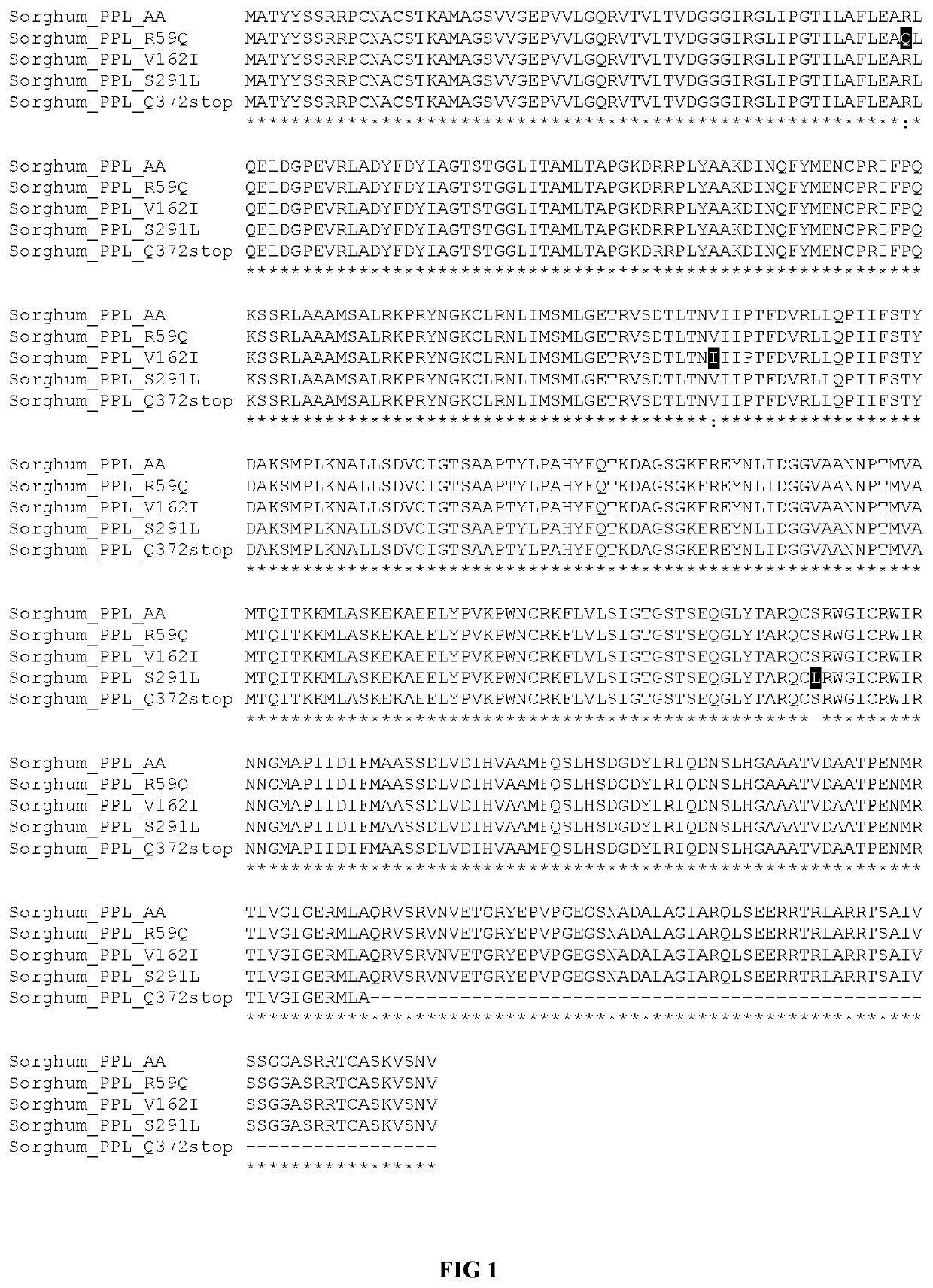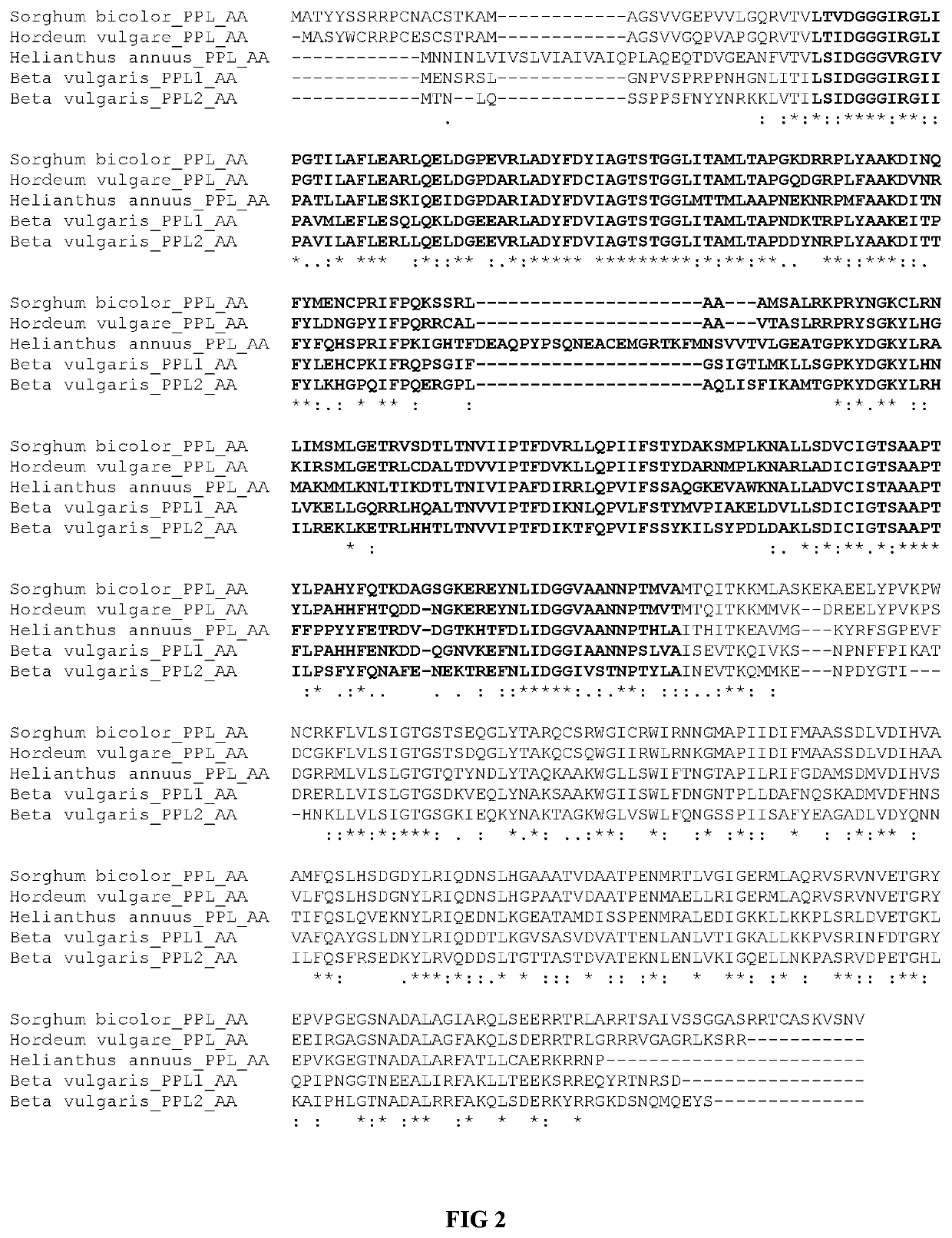Haploidization in sorghum
a sorghum and haploid technology, applied in the field of sorghum haploidization, can solve the problems of time-consuming and costly hybrid breeding process, and achieve the effects of short time, improved plant induction performance, and simplified laborious breeding program
- Summary
- Abstract
- Description
- Claims
- Application Information
AI Technical Summary
Benefits of technology
Problems solved by technology
Method used
Image
Examples
examples
1. Identification of Patatin Phospholipase as a Target for Conferring the Property of Haploid Induction in Sorghum
[0162]In a TILLING population, a sorghum plant was found which was able to induce haploidy with an efficiency of about 1%. There was a focus on various genes as potential targets in the search for the genetic basis that confers this property in the identified sorghum plant. The selection of genes was made based on the fact that they are preferentially expressed in reproductive organs of the plant and in some way play a role in fertilization, because chromosome elimination can occur through defective or incomplete fertilization, for example, by a missing or incorrect transport of the generative cells to the female ovules or by acting on the energy metabolism of the pollen, resulting in a haploid chromosome set.
[0163]According to preliminary investigations in the context of the present invention, a mutated gene was then found, which could be identified as patatin phospholi...
PUM
| Property | Measurement | Unit |
|---|---|---|
| pH | aaaaa | aaaaa |
| pH | aaaaa | aaaaa |
| length | aaaaa | aaaaa |
Abstract
Description
Claims
Application Information
 Login to View More
Login to View More - R&D
- Intellectual Property
- Life Sciences
- Materials
- Tech Scout
- Unparalleled Data Quality
- Higher Quality Content
- 60% Fewer Hallucinations
Browse by: Latest US Patents, China's latest patents, Technical Efficacy Thesaurus, Application Domain, Technology Topic, Popular Technical Reports.
© 2025 PatSnap. All rights reserved.Legal|Privacy policy|Modern Slavery Act Transparency Statement|Sitemap|About US| Contact US: help@patsnap.com


